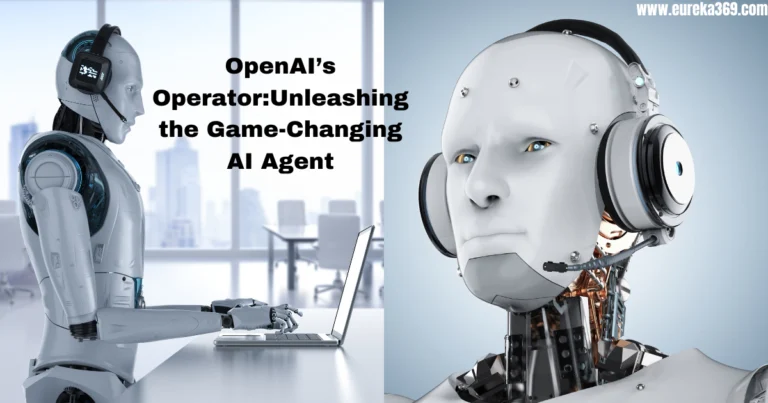
Foundation and Mission
A group of seven scientists and engineers founded Neuralink: Elon Musk’s brain-computer interface company in 2016. The company is headquartered in Fremont, California and aims to create a “symbiosis between humans and AI.”.
The “neural lace” concept from Iain M. Banks’ science fiction series “The Culture partially” sparked Musk’s interest in the idea.
Technology and objectives
Since, Elon Musk’s Neuralink, the brain-computer interface company focuses on creating sophisticated brain-machine interfaces (BMIs). Hence,the goal is to create a “digital layer above the cortex” that can be implanted through veins or arteries, rather than extensive surgery.
However, the technology uses a small implantable device with electrodes that can communicate between neurons and computers. Elon Musk’s Neuralink, brain-computer interface company hopes this will enhance human capabilities and help treat neurological disorders and spinal cord injuries.
Progress and challenges
Even though, Neuralink has conducted experiments on animals such as pigs and monkeys but the results have been mixed. Hence, the company faced criticism over animal welfare concerns and allegations of unnecessary animal deaths. In May 2023, Neuralink received FDA approval to begin human clinical trials.
Therefore, the first human subject, a 30-year-old patient, successfully used the Neuralink device to control a computer cursor. However, the technology is still in its early stages and faces regulatory hurdles before becoming commercially available.
Elon Musk’s involvement
Musk co-founded Neuralink in 2016 and has invested over $100 million in the company. He has made bold claims about the technology’s potential, including curing paralysis, deafness, and blindness. However, Musk’s other ventures, such as OpenAI and xAI, also involve advancements in Artificial Intelligence.
Surgical Robot
Design and Functionality
Though, the design of a surgical robotic arm minimizes surgical trauma and tissue damage associated with larger, more rigid probes by implanting threads into the brain. The robotic arm drills a coin-sized hole in the brain and then inserts ultra-thin, flexible threads.
Risks and complications
Due to its invasive nature, the surgical procedure carries risks and infections, including bleeding or tissue damage. However, long-term biocompatibility can cause damage to neural tissues. Hence, to minimize these risks, skilled surgeons and strict adherence to surgical protocols are required.
Surgical Robot Components
The surgical robot attaches insertion loops using a tungsten rhenium needle. Hence, they inject individual probes into the brain after they have penetrated the meninges and cerebral tissue. The needle is part of the robotic insertion head, which is 25 micrometers in diameter. The robot can inject six wires consisting of 192 electrodes.
Goals and Objectives
Hence, the goal of designing this surgical robot is to detect risks or adverse effects as quickly as possible. The design aims to enhance the accuracy, precision, and safety of electrode implantation through surgical methods.
Probes

Composition and Materials
Probes are composed of wires made of polyamide, a biocompatible material with a thin gold-platinum conductor. Each probe contains 48 or 96 wires, and every wire is capable of carrying 32 electrodes.
Electrode Capacity
The total system is capable of forming 3072 electrodes per formation.
Insertion and placement
These probes, consisting of threads or wires thinner than human hair, are inserted into the human brain using a robotic arm.
Electrical Signals and Data Transmission
The electrodes present in the wires send electrical signals from neurons in the brain to a computer connected to a chip. The wires interact with an electronic system that allows the amplification and acquisition of brain signals. The flexible threads detect neural activity and transmit data from neural signals with high precision and minimal invasiveness to a computer.
Data Decoding and Applications
An app decoded the data in binary language (BCI), which triggers actions in the human body without moving organs, involving only brain activity and thoughts.
Custom Chips
Application-Specific Integrated Circuits (ASICs)
ASICs use an electronic system designed for processing and transmitting data from brain neurons to external devices. These chips are capable of storing the neural activities needed to simulate neurons.
Electronic System Components
The system consists of 256 individually programmable amplifiers, analog-to-digital converters within the chip, and peripheral circuit control to serialize the digitized information obtained.
Recording Capabilities
This technology allows electrodes to record the firing of every neuron in the form of a group, creating a 1,536-channel recording system.
Goals and Applications
The overall purpose of implanting a Neuralink chip is to enable telepathy and improve the lives of those with neurological disorders and disabilities. Moreover, Neuralink aims to give people with paralysis digital freedom by enabling easier communication, web browsing, creative expression, and gaming. In the future, the link could potentially be used to restore physical mobility by reading brain signals and stimulating nerves and muscles.
Implantation Method
Since, Neuralink implantation involves invasive surgery, where electrodes are directly inserted into the brain. Therefore, this allows easier interaction with neural impulses and signal transmission from the brain to computers. Further more, Invasive surgery ensures accurate placement of electrodes within neural tissue to avoid complications like infection, bleeding, inflammation, device malfunction, brain tissue damage, and psychological issues.
Noninvasive Methods
Noninvasive methods like MRI and TMS use external imaging, which lacks the depth and precision required for a neural implant transplant. However, these techniques do not directly penetrate the brain and receive information from the surface, providing insufficient data for neural implant transplants. Noninvasive methods do not offer better biocompatibility compared to invasive methods.
Elon Musk’s Neuralink Experiments
Existing Technology
Elon Musk did not pioneer this technology, as it already existed with companies like Utah Array and Synchron conducting human trials. However, Neuralink has created some better innovations.
Animal Experiments
Before getting FDA approval, Neuralink performed experiments on animals in earlier times. They implanted Chips in the brains of rats and mice. In 2020, Musk showed pigs with neural implant transplants live on stage during a presentation. Hence, the overall intention was to record neural signals associated with sensory functions and improve the technology with more advanced research.
Monkey Experiment
In April 2021, scientists conducted neuralink experiment on a nine-year-old rhesus macaque monkey. By placing Ultrafine electrodes in the motor cortex part of his brain, allowed him to play a pong game using his muscles or body parts. The chip then sends data to detect which part of the brain was involved in the movement, which then neurons received and send to computers. The monkey receives a sip of banana juice from a steel pipe as a reward for every successful move.
Controversies and Challenges
However, these experiments raised many controversies, blaming them as unethical. Despite these challenges that Neuralink faced, in May 2023, the FDA approved the first human trial.
The First Human Trial

The first human trial allowed a quadriplegic patient, who had paralysis since a 2016 diving accident, to control a computer with his thoughts. Neurons interacted with computers and receive all data through that. The patient, Noland Arbboug, expressed his amazement at how Elon Musk’s brain implant has changed his life.
You can also check out First Person With Elon Musk’s Neuralink Chip Speaks Out or watch below:
Another Brain-Computer Interface Implant
Recently, Elon musk said in a news that Neuralink will implant another brain-computer interface into second human being. Further more, Neuralink has also improved hardware to ensure human safety. Musk also expects to have higher number of pateints with the implanted chips by the end of this year.
Neuralink will implant its brain-computer interface system into its second patient within a week, said Elon Musk on Wednesday, July 10, 2024.
Washington Times
Conclusion
Therapeutic Applications
Elon Musk’s Neuralink is designed to cure diseases associated with the spinal cord. Neuralink will be beneficial for patients with paralysis or Parkinson’s disease.
However, this technology will allow machines and minds to understand each other’s language. Elon Musk’s Neuralink brain-computer interface company will revolutionize human-brain interaction and healthcare. Further more, Neuralink will improve surgical techniques, helping mitigate the risks created by this technology.
Future Potential
Research is still in progress, but these trials and experiments will open new doors of exploration in the future. Elon Musk has mentioned that Neuralink could potentially cure blindness in the coming years.
Musk announced in 2023 that Neuralink would be ready in a few years to enable “phone or computer telepathy for those who have lost their mind-body connection. NeuraLink technology will unlock new possibilities in the field of medical science. With ongoing research, it will enhance the understanding and capabilities to face challenges that come as hurdles.
Here is another good read on Orion AR Glasses: Transforming Vision with Neural Control
Citations
- https://youtu.be/x-DnDnLjC04?si=e8H6cw4IIal1kLYz
- https://youtu.be/vzxdIIialvA?si=gKcrSFDn9AOPlYxX
- https://youtu.be/hbEwvBcN6xo?si=7W-fU5RIXoIl01MH
- https://youtu.be/tN1lVwTHCMw?si=Z4ox1QgjEVqxAchy
- https://en.wikipedia.org/wiki/Neuralink
- https://youtu.be/tN1lVwTHCMw?si=Z4ox1QgjEVqxAchy
- https://www.washingtontimes.com/news/2024/jul/11/elon-musk-says-another-neuralink-brain-implant-com/


